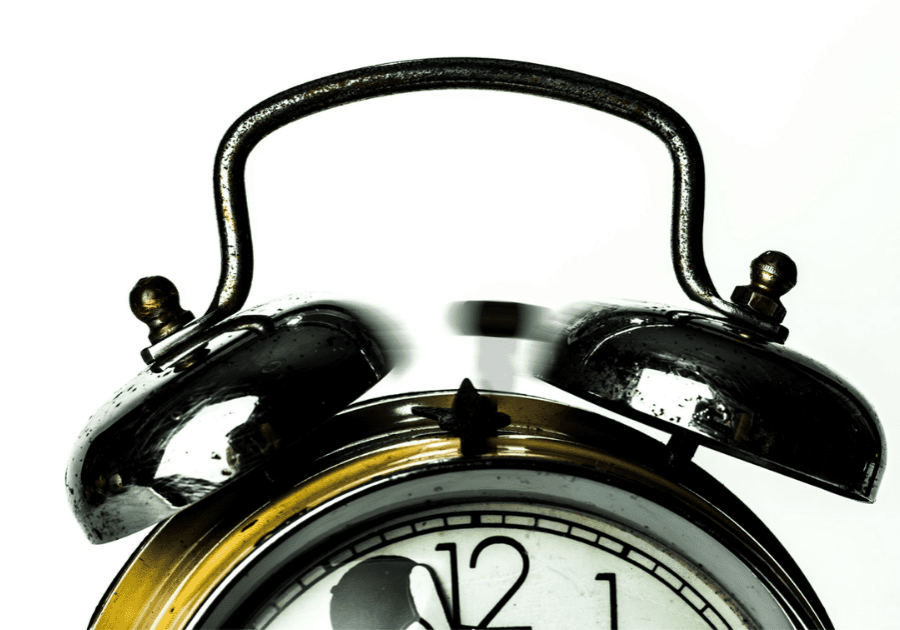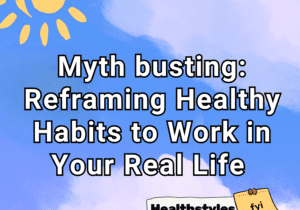Get Better Sleep – What I learned from Insomnia Treatment
A couple of years ago I struggled with sleep. I had just taken a new job at a remote site. This meant 12 hour workdays and sleeping in a dorm room. Think thin walls, hallway lights always shining under the door, and shift workers coming and going. Having been a light sleeper since the dawn of my life, frequent wake-ups and crappy sleep became my normal. My immune system took a nosedive. After three nasty colds in the course of four months I knew something had to give. Either I figured out how to fix the situation to get better sleep, or I was going to be finding a new job.
Getting serious about sleep habits and sleep environment
I asked to be moved to a quieter room far away in a back corner and as far from any staircases as possible. I was already wearing earplugs, but I also bought myself a simple silk sleep mask to block excess light.
“Without enough sleep, we all become tall two-year olds.”
― Jojo Jensen, Dirt Farmer Wisdom
Then I got some support from a very unexpected avenue. My partner, who NEVER has issues with sleep, ever, bought a Dreem* sleep-tracking headband “for science.”
I had no idea why he was spending so much money on a sleep tracking device that reads brain waves which he clearly didn’t need, buuut in the end it was I who reaped the benefits...and wow did I get his money’s worth!
While he used the basic programming to assess his quality of sleep and the impact of one vs three beers in an evening, I ended up using the full sleep restructuring program, including a couple of calls with a psychologist.
(For those who are interested in his results, his conclusion was that sleep quality drops immediately at one beer, and then again significantly at about 6 beers. I have no idea how well the boundary at six translates to other humans, but I expect the shift at one is universal.)
After a few months, I was getting better sleep than ever. I'm not saying that I don’t sometimes break my own rules and systems, but I always have a clear path to get back on track which is priceless to me.
Sleep facts and strategies to sleep better
You probably already know the basics of good sleep such as a quiet, dark, cool room and having a consistent wind-down routine. I won’t repeat those for you here.
Instead, here are five of the unexpected things that I learned:
1. A consistent alarm time is more important than a consistent bedtime.
Now, don’t get me wrong. A consistent bedtime IS important. You want both in a daily routine. I find most people aim for a consistent bedtime in order to get more consistent with their wake-up time, but this is backward. It’s the consistent wake time that enables a consistent bedtime.
Why does it matter which way you go? Because a consistent wake-up time sets your circadian rhythm (aka your internal body clock) so you become sleepy at a consistent time, and therefore can go to bed at a consistent time.
Frequently, when you struggle to get enough sleep, it feels sensible to sleep in whenever possible to “catch up” on your sleep debt. The problem with this is that it means you won’t get tired at your usual bedtime, which means you either don’t go to bed on time OR you wind up trying to force sleep when you aren’t tired. A changed wake-up time is quite literally giving yourself jet lag, but without the fun vacation attached. Ew.
Sleeping in occasionally is still ok if you aren’t dealing with severe insomnia, but it’s best to:
a) minimize the sleep-in to around an hour
b) pick one day to sleep late so you don’t have to reboot your circadian clock to get back into your routine every Monday.
No wonder nobody likes Mondays! They’re all showing up to work with weekend jet lag!
This was hard for me. I get up at 5 for work. I am not a 5 am person, and want nothing more than to sleep until 7 or 8 on my days off. Or at least, I used to want nothing more. I still struggle a bit to keep my sleep-in day to once in a row, but when I stick to the plan it really makes a difference.
2. Trying to sleep when you aren’t tired will backfire
Sleep is classical conditioning. You’ve probably heard about Pavlov’s dogs. They learned to connect the sound of a bell to food, so they’d start drooling as soon as they heard the bell, even if there was no food. The association with food was enough.
Our sleep patterns are not more sophisticated than that dog drool...I mean that experiment... We learn to associate certain things with sleep and certain things with waking. Some are obvious, like light and darkness. Perhaps you always read a bedtime story to your kids. Others are harder to spot.
For example, if you lie in bed for hours, willing yourself to sleep, what you are accidentally doing is training your brain that bed equals awake. Not to mention reinforcing any negative beliefs you may carry about not being ‘able’ to sleep. As Scooby would say, “Ruh roh, Shaggy!”
So what should you do instead? Get up, and go do something relaxing (no screens!) somewhere else until you feel sleepy again. It’s critical to strongly connect bed with sleep so you only want to get into bed when you feel that sleep pressure (i.e. sleepiness)
For me, this looked like switching to the armchair or yoga mat in my work dorm room to read, meditate, or listen to music until the sleepies started to creep in. At home, I would head for the yoga mat in my office across the hall so I wouldn’t disturb my partner.
To keep it simple - use your bed for sleep and sex only. Everything else happens elsewhere.
If you already have a routine such as reading in bed and you are not struggling with sleep, you will likely not need to follow this strictly. Keep doing what works for you. However, if you are struggling, it’s worth trying a stricter approach for a while as a test.

Sleeping in a gym is not recommended for humans. My dog strictly uses the gym to sleep, so it’s cool.
3. Sleeping longer isn’t always better
As I mentioned at the beginning, some of my issues were taking a long time to fall asleep (long sleep onset) and waking up frequently during the night (fragmented sleep). So naturally, I was making the error of trying to get as many hours of sleep as possible.
What this did was mess up my schedule, as noted above, and reinforce the frequent waking pattern. Because I had slept so long, I wasn’t as tired, so I’d take even longer to fall asleep as well as sleeping lighter and waking easier.
Within the program, they had me restrict my sleep to 6 hours for a while to “compress” my sleep cycles. My wake-up time stayed exactly the same, but I would intentionally go to bed later. My sleep pressure in the evenings increased, I started falling asleep as soon as my head hit the pillow, and I’d drop right into deeper cycles of sleep.

Then once my sleep cycles were looking good and I was sleeping through the night instead of waking, my bedtime gradually shifted earlier by a half-hour at a time. If the sleep quality was still good after a few days, it would increase again. Eventually, I found my sweet spot of high-quality sleep and waking up refreshed, which is 7.5 to 8 hours.
4. You need the right light at the right time of day for better sleep
Darkness in the evening tells you it’s nighttime and helps you become sleepy. Natural light in the morning clearly wakes you up and tells you it’s morning. No surprises there.
Daylight also helps set your circadian rhythm. To help lock in your circadian rhythm, getting some sunlight as soon as possible after waking can be very helpful. If you live in the northern hemisphere during the winter this can get tricky. Tools such as light therapy lamps and sunrise alarm clocks can help if the earliest available sunlight isn’t cutting it for you.
In the evening, on the other hand, you want to shift away from all bright lights. Dimmers, lamps, and candles are great ways to help reduce stimulation and help you wind down.
This is also why you want your relaxing evening routine to involve a minimal amount of screen time. Not only does the brightness from electronic devices affect you, but blue light from backlit devices specifically mimics the ‘wake up’ effect of bright sunlight by suppressing the production of melatonin (your sleepy hormone).
Whenever you can, avoid screens an hour or more before your bedtime. Plan to watch your shows and scroll social media earlier in the evening. Then, you can switch to a screen-free activity in that final hour before bed.
If you have to be on a device near bedtime, be sure to make use of bedtime mode on your phone. If you are on a computer, you can use a free app called f.lux to automatically adjust your display brightness and coloring.
When you use an e-reader in the evening, shut off any back-lighting and read it by lamplight instead.
5. Your perception of your sleep is probably not accurate
I thought my sleep was HORRIBLE. I had mild insomnia, so it clearly wasn’t good, but my perception was skewed negative.
Often, when I was certain I had been ‘awake’ I was actually in light sleep. My awakenings weren’t as long as they felt. What I thought was 30 min, was often more like 8 min. My time estimation isn’t great most days, but when it comes to unpleasant things, my estimates get a bit dramatic.
I also used to believe that feeling groggy when I woke up meant I had had a poor sleep, which was not true at all. What it actually meant was that I had woken up during either Deep or R.E.M. (Rapid Eye Movement) stages of sleep. Now I know that that feeling will fade. And when it happens, it’s usually because I have messed with my sleep schedule, alarm or bedtime. When I am on routine, I consistently wake up in a light sleep cycle because brains are smart like that.
Of note: it’s possible to discover that your sleep is worse than you thought, so there is no guarantee that you will have this same epiphany. However, most humans tend to overfocus on the negative, so there is a decent chance your feelings about your sleep are more dismal than reality.
Why a headband versus a watch or a ring?
EEG headbands are directly measuring your brainwaves, meaning they’re very accurate. Trackers on your wrist or finger are far away from your brain so they have to rely on things like heart rate, temperature, and hand movement to figure out when you are sleeping and what stage of sleep you might be in.
*Sadly, I’ve learned that Dreem no longer sells headbands to individuals as they have opted to strictly supply clinical trials, so I have no direct link to give you. There are a few other EEG (electroencephalograph) based sleep headbands such as the Muse S. I can’t personally vouch for these other programs, but they are using the same technology.
I did a lot of tracking comparisons between the Dreem headband and my Garmin Venu watch. My conclusion is that my watch does reasonably well at tracking my total hours of sleep and awakenings. The sleep cycle tracking, on the other hand, is wildly inaccurate. I occasionally also ‘fool’ my watch. When I am sitting still reading near my usual bedtime, it will assume I am already asleep, and if I wake up in the night for too long, it assumes I am awake for the day.
If you use a watch or ring to track, focus on the overall sleep. That’s valuable info. Don’t get caught up in the sleep phases, though, because they likely aren’t reliable.
If you are struggling with sleep issues, I see you. I hope at least one of these areas gives you a perspective shift or an idea to try for better sleep.
Want some sleep tips specific to you?
Take this sleep test and see what you learn! https://mysleepprofile.dreem.com/
Sleep tight, Ninja friends.
Health Ninja Jeanette Marcotte is a health coach and professional geologist, who is obsessed with helping fellow professional women and couples reclaim their time and energy by building healthy choices into their daily lives.
When she is not coaching or looking at rocks, you can find her hanging out in her garden, collecting new hobbies, and/or reading far too many books at once.
Find other articles written by Jeanette on her coach profile. Hang around for mindset strategies and micro-habits that will transform your health & confidence so that you feel like a Health Ninja, too!









